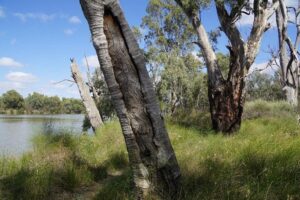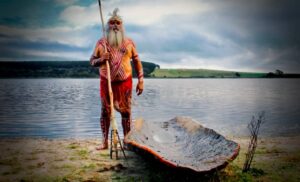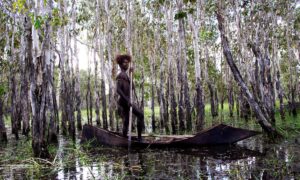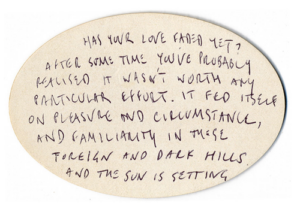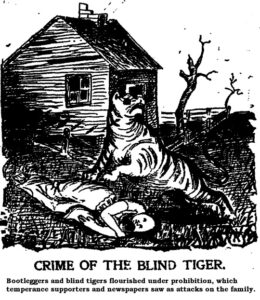It is a crazy situation. The Coalition is wheeling out an old codger who, in the end, could not hold his own seat, to try and burnish the credentials of a Prime Minister who has been described in very unflattering terms by a succession of women. While there hasn’t been any suggestion the Prime Minister will lose his seat, if I were in his electorate of Cook I would be interested in the credentials of his opponents.
Yet Albanese, in the same spirit of that same old codger (just a younger version), when the old codger was running for Prime Minister in 1996, decided to create himself as a small target to frustrate Keating. It worked, but the community had tired of Keating. Despite his intelligence, his vision, his achievements, in the end he scared people. Keating was also an anomaly because he never identified with sport, despite encouragement. In the end, he was also a good hater, although Howard was on a par – and in Australian politics to hate your opponents and their policies is a strong driver.
Morrison has no policies apart from feeding those who sustain his power, a dangerous tactic in a democracy. Albanese on the other hand has no vision, apart from his log cabin story told with a bowl of minestrone. As John Edwards, a former Labor operative sneered about the policy flourish of the Coalition in the Snedden period – “policy by Penguin Books” he called it. In other words, policies copied without discussion to disguise a vacuum of thought. One of the problems in Australia is the shortness of the electoral cycle. Thus, the governments are endlessly campaigning, brandishing the chocolate box of instant gratification without any long term commitment to improving the State. Rather it is about enriching oneself and one’s buddies.
Far more insidious is to advocate policies which have been shown not to have worked in the past, often because they are easy to promise. There are always missing components, selling a chassis without the engine. One of the missing components is always the translation of the effective use of funding to the actual situation. In other words, most policy announcements concern inputs – easy to throw taxpayer money around without worrying about outcome.
Perhaps the most insidious is funding projects when in effect the government is just transferring funding to a pack of rapacious rent seekers who happen to own the real estate and label it “nursing home” or “child care centre”.

Many years ago I had experience, when I was Chair of a Co-operative, of setting up a child care centre out of enlightened self-interest. In the mid-1960s it was unusual for both parents to be working full-time, but my then wife decided that she, along with a few like-minded parents, would establish a childcare centre within a co-operative framework. The centre is still operating.
There were major obstacles, not the least of which was that the woman’s place was regarded as being in the home, and if she had to work, then the family would have to look after the children. That in itself gave some clue as to the dilemma of childcare. During WWII so-called day nurseries were established with government subsidy to enable women to enter the wartime workforce, but still bear children. At the same time, at least in Victoria, there was a very strong kindergarten sector which catered for the middle class, and worked on the assumption that the educational aspect of childcare commenced at three years of age. The challenge is to formalise that learning into childcare arrangements that may begin in infancy.
At that time in the 1960s, there was no funding link between the two sectors but there was one advantage in Victoria, which was later abolished (because ideologues believed it should be so, even if it was shown to work), namely that the broad field of “infant welfare” and “kindergarten” were in the same Ministerial portfolio.
It was a great advantage when early childhood education was included in “community health”, for which I was responsible for five years in the late 1970s. I was constantly assailed by accusations of being dedicated to the “medical model”. This catchcry was led by social workers trying to usurp a doctor being in charge of the project – and a man to boot, figuratively. It was a form of reverse discrimination. Men were OK as paediatricians on the medical periphery, but women had the core expertise in matters related to early childhood development. This term “medical model” has become difficult to sustain as the medical workforce has become increasingly female.
The childcare model that we constructed was funding by a co-operative under the parents’ control. When I was directly involved in childcare, there was a strong antipathy to government intervention. There was no tax relief as there was for private primary and secondary school education. Childcare was “women’s business”. Even from birth, the father was excluded – fathers being present at the birth of their children was a “no-no.”
Regulations were harsh, partly to discourage childcare centres. A ghastly fire in 1957 at Templestowe, a suburb of Melbourne, where a child minding centre caught fire and infants were burnt to death, underlay this. There is no bigger disincentive than over-regulation to providing such service. Some of the regulations were just plain foolish. Most over-regulation is unenforceable, but the one regulation I best remember was the dimensions required of a dining room in a childcare centre. Accommodating more than ten children in such a centre diminished the space requirement, presumably on the grounds that as children increase in numbers they get smaller. Such is the inanity of regulation.
The major problem is the appropriateness of the staff and the underlying training requirements. Before the pandemic it was tempting just to import cheap labour from overseas and any training was left to the rent seeker entrepreneur owner – essentially, take the money without any serious value addition by way of training.
Our co-operative structure worked well, but its viability even then depended on the co-operative securing capital funding and raising fees that were based on predicted use; thus assuring certainty in the income flow. Even then, 10 per cent of children in the Centre paid nothing. (Only the management of the centre knew who they were.) The use of childcare as a convenience without planning and then expecting that the cost for such behaviour should be borne by the childcare centre was something that a co-operative can disabuse. Financial viability is closely intertwined with the actual provision and because of parent involvement, shared responsibility.
The one element of a well-functioning co-operative where care is involved – at the extremes of life (and separating out disability) – is that it mimics the family, especially now that fathers are more likely to share responsibility – even being the prime carer. Thus, under this model, care is not designated solely to an employee as it used to be among the wealthy – the nanny employed to remove responsibility from the parents followed by the children being sent to boarding schools, or the model of the grandparents looking after the children.
In June 2021:
- There were 7.3 million families, an increase of 1 million since June 2011,
- 1 in 7 families were one parent families (15.0 per cent) of which nearly 80 per cent were women
- There were 1.4 million jobless families (19.5 per cent)
- Of the 6.1 million couple families, 1.6 per cent were same-sex couples.
Out of the jumble of statistics, can we pick those elements of the family which can be transferred to cost-effective childcare? After all, from the age of five years, most schooling is provided by the State.
Years ago, we found that for childcare, co-operatives worked; moreover, at a time when it was fashionable for childcare to be the responsibility of the wife, I was incited into involvement in the management of childcare – even to the extent of developing some knowledge and spending time in the centre among the children, that is, taking my turn in providing care as part of the co-operative effort.
This is very commonplace now that more fathers are more closely involved with their children. I have always believed that the co-operative framework is the best way to mimic the family ideal of care and early childhood education. In our case, the State subsidised us with the capital, after the university provided the basic building, providing what I call the technical component that relates to the educational and welfare components needed to modify the building to facilitate compliance.
Then the question to be answered is what are the staffing requirements to mimic an optimal home environment? There should not be a large administrative structure and the training program should be designed for neither self-aggrandisement nor unnecessary expenditure. I have always believed that the co-operative framework provides that ability for the parents to determine how much “professionalism” is required.
Rather than just throwing money into the private sector, if I would be asked to review the area, given my bias towards the co-operative framework, I would seek out what has been successful – see if the template we fashioned so long ago still applied and build on that. In the meantime, the parents should be subsidised to the theoretical level for best practice, with or without a means test. The aim would be to maximise the growth of the child, within an extended family loosely termed “co-operative”, given that the word does have a legal meaning – the aim would not be to maximise profit.
When in Knead during a Pandemic
The Boston Globe reports that the COVID-19 pandemic breathed new life into the industry of “alternative spirituality,” where customers rely on readings and reiki-charged candles for guidance. Businesses sprinkled around Boston are experiencing a spike in interest and revenue that has yet to taper out.
Crowds flock to Open Doors, an eclectic Braintree storefront stuffed with chakra bowls, lion statuettes, and images of Egyptian deities. Open Doors has 18 readers, who saw 25 percent more business than in pre-pandemic days…
The increase may be due, in part, to boredom. With the pandemic limiting entertainment options, many were on the hunt for something fun to do, something new, something novel: video games, crafts, gardening, and of course, the sourdough bread baking movement.
The sourdough bread baking movement in the US has received a fillip with the pandemic. Without an opportunity to bake a traditional loaf of bread while stuck inside at home, people started turning to another bread option, sourdough. Unlike other types of bread, sourdough doesn’t require dry yeast, which was in short supply during the early days of the pandemic. Sourdough requires “wild yeast”, which is present in all flour.
I spent a week at Yale a few years ago when the head of the Berkeley Divinity School, Andrew McGowan, an expert baker, had integrated his love of bread making into discussions of its biblical significance. I learnt then that when one combines flour with water, sourdough “starter” will eventuate. As someone said, neither flour nor water are going anywhere during a pandemic. In the course of my Yale time, I found out about kneading and needing to have a great deal more practice. I felt very much of entering a farinaceous novitiate, but it is always enjoyable to participate in a program where one starts with zilch knowledge. There are no expectations.
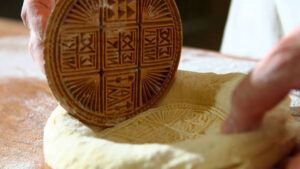
Not only sourdough but also banana bread have, during the pandemic, attracted devotees. I did not expect people to be soothing themselves with sourdough. I must have missed something during that week at Yale. Maybe I had never progressed from the novitiate. Not completely true, but making the leavened bread, prosforo, used by the Orthodox Church, foundered in the face of other things to do.
The pandemic has not finished; so perhaps we should encourage the invigoration of my farinaceous novitiate, being ultimately “well-bread” as a result of the pandemic, as it were.
By the way, during the isolation, the Ganesh on the mantelpiece kept the Virus away. Not that we indulged in any of that occult malarkey; Ganesh after all had been our protector for years – the equivalent of the Roman lares and penates.
The Orthodox Church
John Anthony McGuckin is not the name you would expect of a Romanian Orthodox archpriest. As I have always been curious about the Eastern Churches, I obtained a copy of his recent book, “The Eastern Orthodox Church”, which purports to be “a New History”. It is not that the author is dismissive of the Western Christian tradition as epitomised by the Roman Catholic and Anglican Church. It is more resentment since he believes that the Roman Catholic Church undermined it, when the Orthodox Church, apart from the Russian Church, was losing all its authority.

The Greek Orthodox Church survived under Ottoman rule linked, as it was, to Byzantium, later Constantinople. The other three original Eastern patriarchates shrivelled. Interestingly, the author is more favourably disposed towards the Anglican Church because the relationship has not suffered the effects of the original schism from Rome. As McGuckin says, in fact it may be because the two churches went separate ways from Roman Catholicism which enhanced the relationship between the Orthodox and Anglican churches.
The Russian expression of the Orthodox Church came with the Slavic conversion in the ninth century “as also in Serbia, Georgia, Bulgaria”. Much of its claim to being the church with true Apostolic succession resides on the concentration of the book on the consolidation of Christianity, before the assaults of Islam on those areas where Christianity was embodied in the four original patriarchates of the Eastern church – Jerusalem, Byzantium, Alexandria and Antioch.
The Orthodox Church bore the brunt of the early turmoil of both heresy and schism. “Heresy” was where one strayed away from the authentic beliefs of Orthodox Christianity and “schism” was where there were doctrinal and power struggles but within, not outside the Orthodox Christianity polity. There were periodic ecumenical councils in the early Church, which today may seem somewhat narrow doctrinal arguments tossed back and forth. However, it led to the separation of Non-Chalcedonian Churches of Egypt, Armenia, Syria and Ethiopia from the ongoing Ecumenical council after that of Ephesus in 431. The Assyrian Church had separated earlier.
At the end of the first part of this book, I had been introduced to a large number of clergy, saints and early Christian worthies of which I had little knowledge. Some of the differences of doctrinal interpretation seem so esoteric, yet those churches which believe in Apostolic succession have been crucial.
I still recite the Nicene Creed exemplifying inter alia my basic belief in the Trinity – this ephemeral group of Father, Son and Holy Ghost – which in itself, without doctrinal education, is a pure article of faith, otherwise impossible to fathom. In the end, why am I reciting the codified belief system, first enunciated in 325, when the Orthodox belief in the Trinity was being challenged by both Arian and Nestorian heresies?
Despite the argument about doctrine, the Nicene Creed survives today demonstrating how robust the Church is.
Even so, the Roman Church, without consulting the Eastern Church, added “and from the Son” (Filioque) to the Nicene Creed. Also, the Eastern churches resented the Roman enforcement of clerical celibacy, the limitation of the right of confirmation to the bishop, and the use of unleavened bread in the Eucharist. This led to the schism between the Western and Eastern churches in 1054.
My recitation of the Creed includes “Filioque”. I take unleavened bread as part of the Eucharist, but in the Anglican church, where celibacy is a matter of choice and the Patriarch of Rome does not lead our Church.
There is a chapter on what one can expect if one enters the Orthodox Church. I remember a somewhat different experience – my first exposure to an Orthodox service. I stumbled upon such a service in the steerage area of a ship bringing Russian emigrés, who boarded the ship in Hong Kong, to Australia. It was 1957. I remember wandering down to the lowest desk having been attracted by the muffled chanting.
There they were, in the dimness of this area of the ship abutting the forward cargo hold. The dark shadow of the priest in dark robes partially illuminated by a shaft of light; the indistinct features of a congregation, all standing, and the liturgical chanting in an atmosphere, heavy with incense.
I have since become interested in Russian church music, particularly in the oktavist, who can sing an octave below the conventional operatic basso profundo. There are a number of these Russian oktavists, who sing yet not grumble this extraordinarily low register, including one named Glen Miller (who is actually American), whose rendition of Chesnokov’s concerto “Do Not Reject me in my Old Age” I find magisterial while others may find it turgid, especially when he explores the lowest notes. I do not understand Russian but absorb the strength of the voice. To me, the Orthodox Church is an emotional experience.
Tchaikovsky’s “Hymn to the Cherubim” brings back memories of that experience on the ship which seemed so simple – so close to Eternity. As the composer himself said “Where the heart does not enter; there can be no music. Music is an incomparably more powerful means and is a subtler language for expressing the thousand different moments of the soul’s moods.”
In recalling that day on the ship, I could have stumbled equally in another age into the Early Church tucked away in some cave in the Eastern Empire, in a world yet to break out into liturgical disputes and worldly appropriation. This was Christianity close to the time of the Apostles, which is the strength of McGuckin’s book, where the extremely difficult concept of the Trinity was being played out against a temporal background. There is so much darkness. God only knows what would have happened if Christ had been confronted and asked why there were no female Apostles. But maybe he was and it was not reported – or it was suppressed. Such is questioning why I profess to be an Anglican.
Rather than questioning, it is a tragedy that the Orthodox tradition has been traduced by a small person called Putin, whose only reference point is a mythical Slavic empire laced up with the superficial gaudiness of ecclesiastical trappings. Yet he is not the only one. Misplaced crusades have enmeshed Christianity ever since the meaning of the Trinity was too difficult for universal acceptance. Factionalism developed. War follows.
McGuckan, by his emphasis on the doctrinal struggles of the early church, does not make for light reading as I indicated above, but without the steadfastness of the Orthodox beliefs of the early Church, maybe we Europeans may not have ended up venerating a Palestinian or Jew or whatever – immaterial when You are an integral part of the Trinity no less.
Overheard
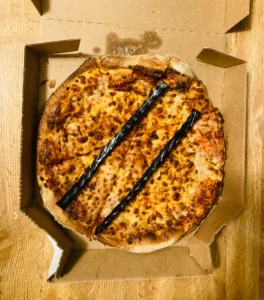
When The Guardian film critic, Peter Bradshaw was asked which film he had tipped to win Best Picture this year 2022, he paused. “Coda has crept up on me. I feel like it might just take it. Then again, I adored Belfast, Licorice Pizza and Drive My Car – I gave them all five stars.”
“Don’t Look Up was a little smug and hectoring for my liking … Dune was wonderful as a spectacle, deeply involving and exotic. Timothée Chalamet , who plays the messianic Paul Atreides in Dune has superseded my man-crush on Adam Driver.”
Adam Driver is a former Marine who is also apparently featured in three films in 2021, The House of Gucci, The Last Duel and Annette. Anyway, I am not sure what a “man-crush” is; sounds a bit crowded to me.
Film watching has been a casualty of the pandemic. I used to get my dose of films on long haul flights, but since 2019, that has disappeared; and I’m sure that this is yet another change, which until I read the list, has rendered me ignorant – and yet I have not missed any of them. Yet! Must be age.
The Island – Part III
This is the final instalment of the northern adventure of that doctor called Bill, based on my experience over 40 years ago. I have repeated the last paragraph of Part II to improve continuity in recounting Bill’s return trip from the Port.
Bill on the move now. The moon cast a faint light — headlights full on, passing the derestriction sign, he was headed back to base. Still, he felt uncomfortable against the hard vinyl seat back. The white lines of the road streamed under the yellow stare of the car lights. No other light anywhere. The scenery had become amorphous; no longer the sweeping watercolour vistas which had absorbed him during the afternoon. Now he was concentrated on the road and the accompanying distance signs. Every sign was keenly sought. He began to concentrate on the sides of the road to see if he could detect the reflection of the headlights in the eyes of animals — red eyes for cattle, blue eyes for sheep and he was buggered if he knew what colour eyes kangaroos had. It was easy to resent the car. Like all Australian-made cars, he thought, a souped up tin can on wheels. Big engine in this one; and on an empty road, difficult not to put the accelerator to the floor. But the car was his island of light. His concentration was interrupted by an impression of something slithering across the road. It was probably a python, or some other snake. Not a goanna. No, probably a snake, but a pretty big one given the thud as he hit it. The headlights glared ahead as the road rose through the blackness. The signpost indicated the Intersection. This was the start of the difficult area, he remembered Graham saying. He tried to fiddle the radio to give himself some company. The static mocked back and he quickly gave up. Then he saw the red reflectors — there was a slow car up front. He wondered whether he could just sit behind it and follow, letting it take the brunt of the night. He slowed down, but his impatience got the better of him. He was a creature of habit. The highways near Perth at night were what he knew, and he always drove in the fast lane. He pulled out and raced past. The other car receded, and he was on his own again. Anxiety about encountering the unexpected kept his back and neck muscles tense. The Spirits had certainly decided to give him a hard time, Bill thought. When the cattle did come, he was expecting them. There they were, two bullocks blundering out into his headlights. He slewed the car past the first one, the tail of the car whipped around so it was like a crab skidding towards the second one. Bill felt the tail clip the bullock and the car reeled back. Bill was no rally driver. He might be able to gun a car down a straight expressway, but here, Bill was a captive of the Spirits. The car slid onto the gravel. The brakes locked and, for a brief instant, the car shook as though about to roll, then it stopped. The car had not gone into the bush, or hit a tree or gone down a culvert or up an embankment. It just ended up at right angles to the direction of the road, part of the back wheels still touching the macadam. Then came the adrenalin outpouring. He perspired; the fear and fright reaction had kicked in. Wide-eyed, dry mouthed and a feeling like his heart was about to pump its way into his neck. He shook uncontrollably. Voluntary action was slow to return. He had slumped forward and he sat back and slowly twisted the steering wheel. He switched the ignition off, and then on. All the needle indicators came back. Encouraged by that, he wondered whether the car would move. It did. He reversed it over to the edge of the road to give himself room to turn and point the car in the right direction. He wondered why the slow car had not caught up. Not that he needed company. He climbed out to survey the damage. There was dent in the rear left door and mudguard. He rubbed his hand over the dent; the tail light was smashed, but no metal had been pushed against the tyre. He looked back for the bullock, but there was nothing — not even a low moan of an injured animal; there was no sign of life. For the first time, he felt the touch of the night. He leaned against the car and tried to adapt his eyes to the limits of his night vision; but as he did, he felt the sense of closeness, so tactile that it caused him to straighten, as though finger pads were gently but relentlessly pressing into his shoulder blades. The Spirits had come down the escarpment, from where the Aboriginals had drawn their likenesses. Bill was the vicarious outsider, challenging the night. He had been warned and was now bidden to go. He had been allowed to survive.
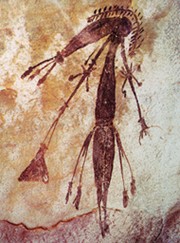
But what of the Bradshaw figures — what would these aliens have to say? Would they come and oppress him? The open car door allowed a pool of light to spill onto the road. The car was Bill’s ship of urban identity. He drove away. There was no further interference in his progress back to his civilisation. He once or twice caught the reflection of other animals’ eyes, but they stayed off the road. He passed the trail to where the rock paintings lay. He had tried to mark it by a nearby concrete bridge. He wondered whether he would come again to see the paintings — to pay his respects. He had been privileged. Privileged — was that only a word to ward off the darkness?
It was all a bit of an anticlimax. The lights of the Town on the Dam came into view and he felt himself relax. He knew where he was; no longer in unconnected darkness. There were cars on the road; there were even stray pedestrians. There were lights on the dam. At the motel, he wiped the sweat from the steering wheel before he went into the bar and ordered a whisky. Fuck being privileged — he had only spooked himself. He drank the whisky and ordered another. He called Avis and a small peroxided woman in pink halter top and shorts came and inspected the damage. She advised him not to drive it; perhaps someone could show him the sights. Bill said that was a good idea. In the end, Bill preferred to sit around the pool, reading Alistair McLean, and not going too far from the air-conditioned bar. And when he did go out he went to the souvenir shop and bought a bark painting and a couple of large pieces of zebra rock. The souvenir shop owner, said: “These are unique; you don’t get them anywhere else — except on the floor of the dam.” The owner tossed in a couple of postcards for good measure. Bill sent the postcards to his friends saying how great the weather was and that he would be flying back in a couple of days. In time, he wrote, for the dinner next week — or was it only cocktails and canapés overlooking the Swan River? He said nothing about the night and his island of light. They would think that it was all bullshit.
Mouse Whisper
I have been told that Nadine Gordimer was a very good writer. In fact she was awarded the Nobel Prize in 1991. This extract below from her recently-read book “A World of Strangers”, first published in 1958, written about South Africa during the early Apartheid era, says it all. The initial description is of living as a black person in Sophiatown, contrasted with the privileged white in Alexandra in the early 1950s – all in the city of Johannesburg.
The reality was nearer the surface. There was nothing for the frustrated man to do but grumble in the street; there was nothing for the deserted girl to do but sit on the step and wait for her bastard to be born; there was nothing to be done with the drunk but let him lie in the yard until he’d got over it. Among the people I met with Cecil (the woman the author’s hero was living with at the time), frustrated men threw themselves into golf and horse racing, girls who had had broken love affairs went off to Europe, drunks were called alcoholics, and underwent expensive cures. That was all. That was the only difference.
Boredom is universal, independent of race – and gives meaning to “meaningless”.
As for we mice – we tend not to be black or white – more grey; unless of course, we are born in the fields with a rural russet hue.
Now where is my white mouse mate, Branco. Oh, there he is – a completely boring mouse – into the its Holeyness, the Swiss Emmenthaler.
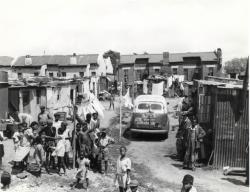

 The series was originally set on a mythical RAF base modelled on the real-life Moreton-in-the Marsh RAF base. It featured a number of English comedians, such as Richard Murdoch and Kenneth Horne. Their audience thought them funny as their binding – that is grumbling – was undertaken with a comic air. As was said about Horne, “a master of the scandalous double-meaning delivered with shining innocence” – the basis of much English humour.
The series was originally set on a mythical RAF base modelled on the real-life Moreton-in-the Marsh RAF base. It featured a number of English comedians, such as Richard Murdoch and Kenneth Horne. Their audience thought them funny as their binding – that is grumbling – was undertaken with a comic air. As was said about Horne, “a master of the scandalous double-meaning delivered with shining innocence” – the basis of much English humour. It was also 1973, when much was happening in Canberra. Let’s say it was not a boring year in politics. Given that I lived in this different era in Canberra, on several occasions Gough Whitlam’s speech writer, Graham Freudenberg, invited me around for a drink in the Prime Minister’s office after stumps were drawn, and on at least one occasion we were joined by the journalist, Laurie Oakes.
It was also 1973, when much was happening in Canberra. Let’s say it was not a boring year in politics. Given that I lived in this different era in Canberra, on several occasions Gough Whitlam’s speech writer, Graham Freudenberg, invited me around for a drink in the Prime Minister’s office after stumps were drawn, and on at least one occasion we were joined by the journalist, Laurie Oakes. I had one experience of being accused of leaking to Laurie Oakes the contents of a sensitive meeting between Bill Snedden, Jim Carlton, then the general secretary of the NSW branch of the Liberal Party, and then Premier of the NSW, Bob Askin. I was taken to lunch – I remember by Tim Pascoe, then a Liberal Party operative – and he passed on Jim Carlton’s concern that I had leaked the details to Laurie Oakes. Why? Because I was seen as close to Oakes at that time. I did not know what he was talking about, as Snedden had not mentioned the matter to me. When I confronted Oakes, he admitted it was Askin. Carlton would not have believed that such a luminary as Askin would leak – after all, he was the Premier. It was just one accusation used in undermining my position. I informed Snedden of my conversation but otherwise kept quiet. Now, so many years on, who cares about revealing the leaker – but remember the lesson, never pick the obvious.
I had one experience of being accused of leaking to Laurie Oakes the contents of a sensitive meeting between Bill Snedden, Jim Carlton, then the general secretary of the NSW branch of the Liberal Party, and then Premier of the NSW, Bob Askin. I was taken to lunch – I remember by Tim Pascoe, then a Liberal Party operative – and he passed on Jim Carlton’s concern that I had leaked the details to Laurie Oakes. Why? Because I was seen as close to Oakes at that time. I did not know what he was talking about, as Snedden had not mentioned the matter to me. When I confronted Oakes, he admitted it was Askin. Carlton would not have believed that such a luminary as Askin would leak – after all, he was the Premier. It was just one accusation used in undermining my position. I informed Snedden of my conversation but otherwise kept quiet. Now, so many years on, who cares about revealing the leaker – but remember the lesson, never pick the obvious.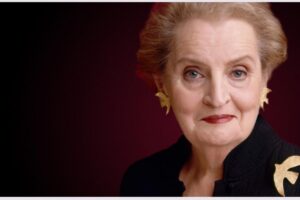
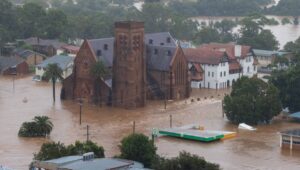
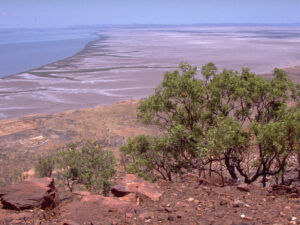

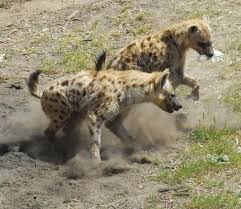
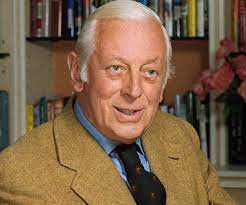
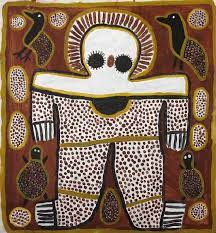 I managed to find one small bark Wandjina for sale in Kununurra, which I gave to my elder son. Since then, my wife and I have acquired several Wandjina painted by the Karedada sisters – Lily and Rosie (the Karedadas were the family with the responsibility at that time for painting Wandjina); a small bark painting by Waigan and one where the provenance was unknown as it was created in the mid-1960s when such bark representations of the Wandjina were new. Most of these bark images came from the Aboriginal people living at Kalumburu, a settlement on Mission Bay about 230 kilometres north of the Gibb River Road turnoff in Western Australia. Here the Spanish Benedictines had established a mission in the early part of the twentieth century. One of my teachers had said that during WWII, when he was in the Australian navy, he had been stranded there. The priests only spoke Spanish and he not; therefore, they communicated in Latin. No mention in any of his anecdotes of contact with the Indigenous people; such were the times.
I managed to find one small bark Wandjina for sale in Kununurra, which I gave to my elder son. Since then, my wife and I have acquired several Wandjina painted by the Karedada sisters – Lily and Rosie (the Karedadas were the family with the responsibility at that time for painting Wandjina); a small bark painting by Waigan and one where the provenance was unknown as it was created in the mid-1960s when such bark representations of the Wandjina were new. Most of these bark images came from the Aboriginal people living at Kalumburu, a settlement on Mission Bay about 230 kilometres north of the Gibb River Road turnoff in Western Australia. Here the Spanish Benedictines had established a mission in the early part of the twentieth century. One of my teachers had said that during WWII, when he was in the Australian navy, he had been stranded there. The priests only spoke Spanish and he not; therefore, they communicated in Latin. No mention in any of his anecdotes of contact with the Indigenous people; such were the times.
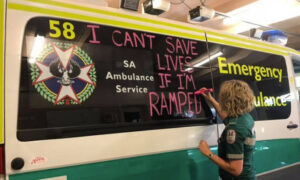
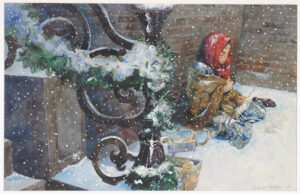
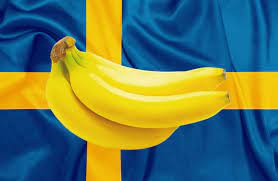
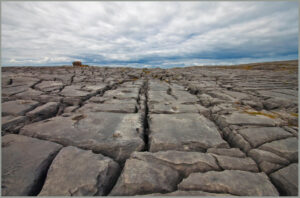
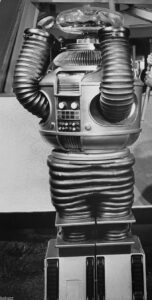 Albanese, you addressed them, but see how the Murdoch Press tried to mangle you? As the Robot’s catchcry in Lost in Space goes: “Warning, warning, warning!” Rather apt, I would think – on many fronts!
Albanese, you addressed them, but see how the Murdoch Press tried to mangle you? As the Robot’s catchcry in Lost in Space goes: “Warning, warning, warning!” Rather apt, I would think – on many fronts!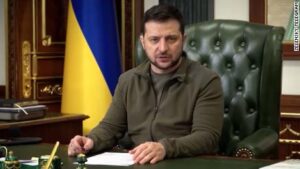

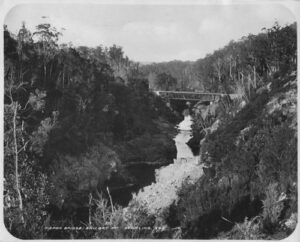
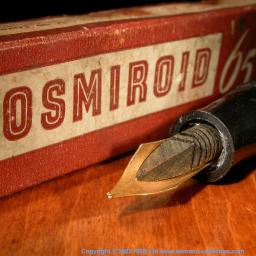
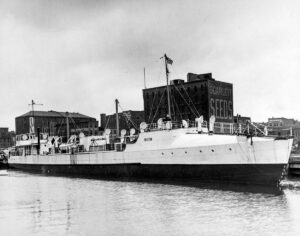
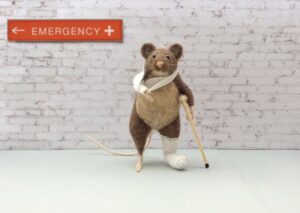
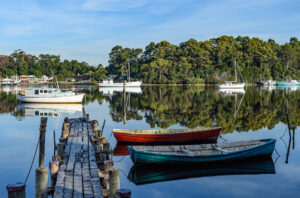
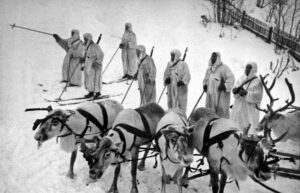
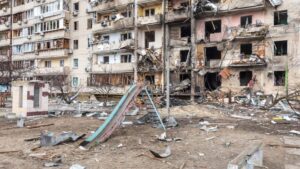
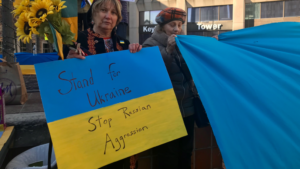
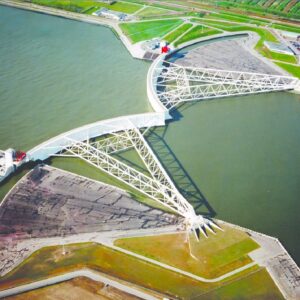
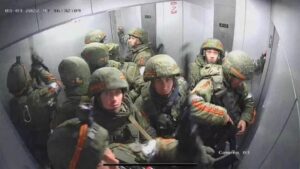
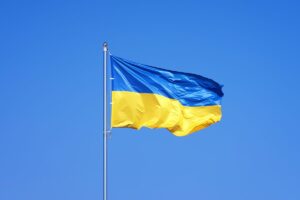

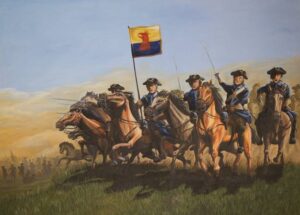
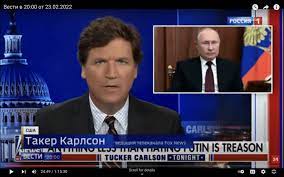
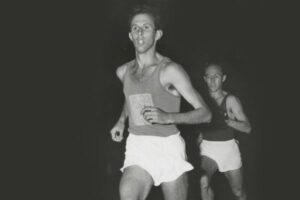



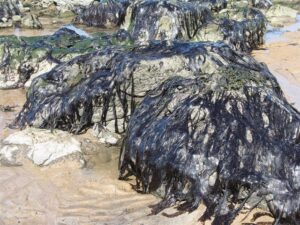
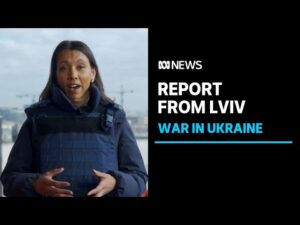 Below Isabella Higgins was reflecting on where she came from in a piece written three years ago. Now she is the ABC face in the Western Ukraine.
Below Isabella Higgins was reflecting on where she came from in a piece written three years ago. Now she is the ABC face in the Western Ukraine.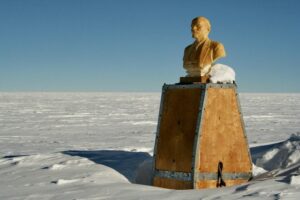
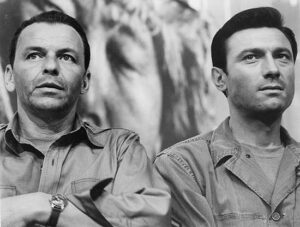

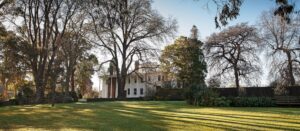
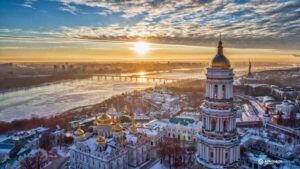

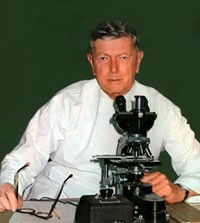
 Australia has yet to reap the full legacy of “Long COVID”; but let me reiterate, as a legatee of a chronic disease with a recent relapse, I would not wish it on anybody. I cannot be vaccinated against my disease, and thus will never have freedom from it – think about it if you are one of those unvaccinated COVID-19 idiots wrapped in your yellow rags, while you rail against vaccination. You at least can gain protection from the disease. For the unfortunate it may become chronic, when sometimes you may wish for the freedom of dying as preferable. You can be assured that will be “forever”.
Australia has yet to reap the full legacy of “Long COVID”; but let me reiterate, as a legatee of a chronic disease with a recent relapse, I would not wish it on anybody. I cannot be vaccinated against my disease, and thus will never have freedom from it – think about it if you are one of those unvaccinated COVID-19 idiots wrapped in your yellow rags, while you rail against vaccination. You at least can gain protection from the disease. For the unfortunate it may become chronic, when sometimes you may wish for the freedom of dying as preferable. You can be assured that will be “forever”.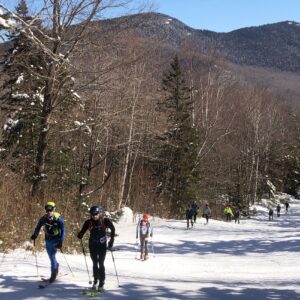
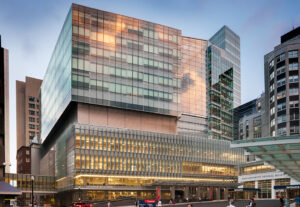
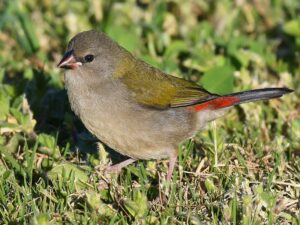
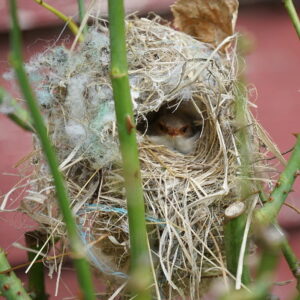
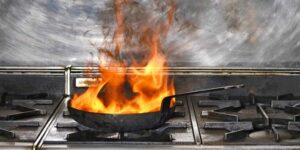

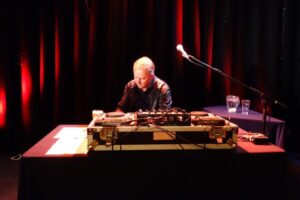
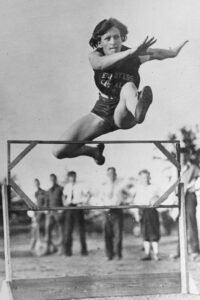
 The wasabi that comes in tubes and packets and is familiar to many diners is actually a blend of wasabi and horseradish dyed green — or contains no wasabi at all. In Japan, chefs at higher-end sushi, soba or grilled beef restaurants grate fresh wasabi at the counter, so customers can experience the acute assault on their nostrils and the unique flavour that lingers for just a moment on the tongue.
The wasabi that comes in tubes and packets and is familiar to many diners is actually a blend of wasabi and horseradish dyed green — or contains no wasabi at all. In Japan, chefs at higher-end sushi, soba or grilled beef restaurants grate fresh wasabi at the counter, so customers can experience the acute assault on their nostrils and the unique flavour that lingers for just a moment on the tongue.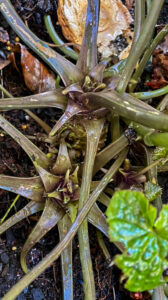 Now, as that wizard green fingered jardineira, Vicki Sheedy, says dismissively, horseradish is a weed. You have to grow it in a pot and not let it get control of the vegetable patch.
Now, as that wizard green fingered jardineira, Vicki Sheedy, says dismissively, horseradish is a weed. You have to grow it in a pot and not let it get control of the vegetable patch.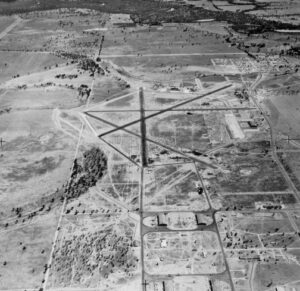
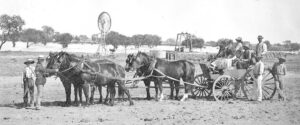 In the 1840s my mother’s family came to Australia from Katowice, which is a major Polish town today but was then Prussia. They settled first in the Barossa Valley but with a shortage of land available there, they walked with their wagons, from South Australia to settle in southern NSW. My maternal mother was a Schröeter. My mother would have been a wonderful subject for “Who do you think you are?”
In the 1840s my mother’s family came to Australia from Katowice, which is a major Polish town today but was then Prussia. They settled first in the Barossa Valley but with a shortage of land available there, they walked with their wagons, from South Australia to settle in southern NSW. My maternal mother was a Schröeter. My mother would have been a wonderful subject for “Who do you think you are?” As of Monday afternoon here, the Russian Olympic Committee team had won 18 medals, the second-highest total behind Norway. But maybe there should be a new category for its medals? “Provisionally won?”, “Won … for now?” “Won, pending further info?”
As of Monday afternoon here, the Russian Olympic Committee team had won 18 medals, the second-highest total behind Norway. But maybe there should be a new category for its medals? “Provisionally won?”, “Won … for now?” “Won, pending further info?”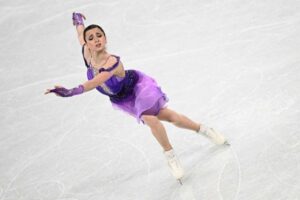

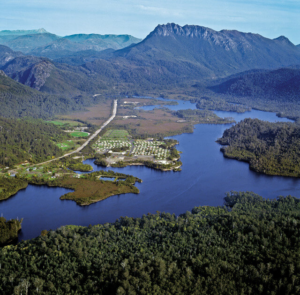
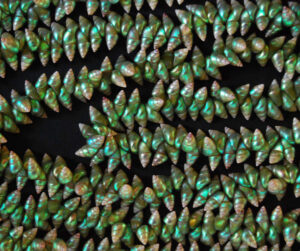
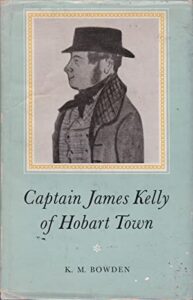 The description of female sealing in the Bass Strait islands is a prime example. No mention of herbs and spices in cooking the young seal. Having personally been one of those who have tasted seal, I would suggest it is not among my top ten gustatory phenomena.
The description of female sealing in the Bass Strait islands is a prime example. No mention of herbs and spices in cooking the young seal. Having personally been one of those who have tasted seal, I would suggest it is not among my top ten gustatory phenomena.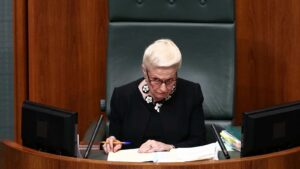
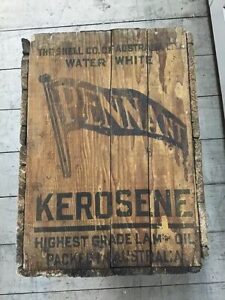
 Some nursing homes are attached to the public hospital. Therefore, I was in a position to influence the rules for visiting doctors. My initial approach was to look at the drug charts of each resident as this gives one an idea of how often the resident is reviewed by a doctor. The need for documentation is as essential as regular visits by the local general practitioner, and each nursing home should have access to a consultant geriatrician or specialist in rehabilitation medicine (and ensure one or the other visits regularly).
Some nursing homes are attached to the public hospital. Therefore, I was in a position to influence the rules for visiting doctors. My initial approach was to look at the drug charts of each resident as this gives one an idea of how often the resident is reviewed by a doctor. The need for documentation is as essential as regular visits by the local general practitioner, and each nursing home should have access to a consultant geriatrician or specialist in rehabilitation medicine (and ensure one or the other visits regularly).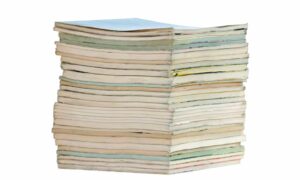 Government falls down in the implementation. Many of the ministers and the bureaucrats think that fussing over the nature of enquiry is enough, and unfortunately too much of the intellectual capital is invested in the initial enquiry and its report. In fact, the report is only the start; but too often it is the end point, gathering dust with so many others.
Government falls down in the implementation. Many of the ministers and the bureaucrats think that fussing over the nature of enquiry is enough, and unfortunately too much of the intellectual capital is invested in the initial enquiry and its report. In fact, the report is only the start; but too often it is the end point, gathering dust with so many others.
 In the last blog I, who once was a tall poppy but tried to dance with the “wolverines”, gave some advice based on this experience. I once knew a person who, like Grace Tame, had a strong profile (at one stage being pictured on every evening edition of the Melbourne Herald depicting the successful beautiful young professional) and saw later at firsthand what she endured.
In the last blog I, who once was a tall poppy but tried to dance with the “wolverines”, gave some advice based on this experience. I once knew a person who, like Grace Tame, had a strong profile (at one stage being pictured on every evening edition of the Melbourne Herald depicting the successful beautiful young professional) and saw later at firsthand what she endured.
